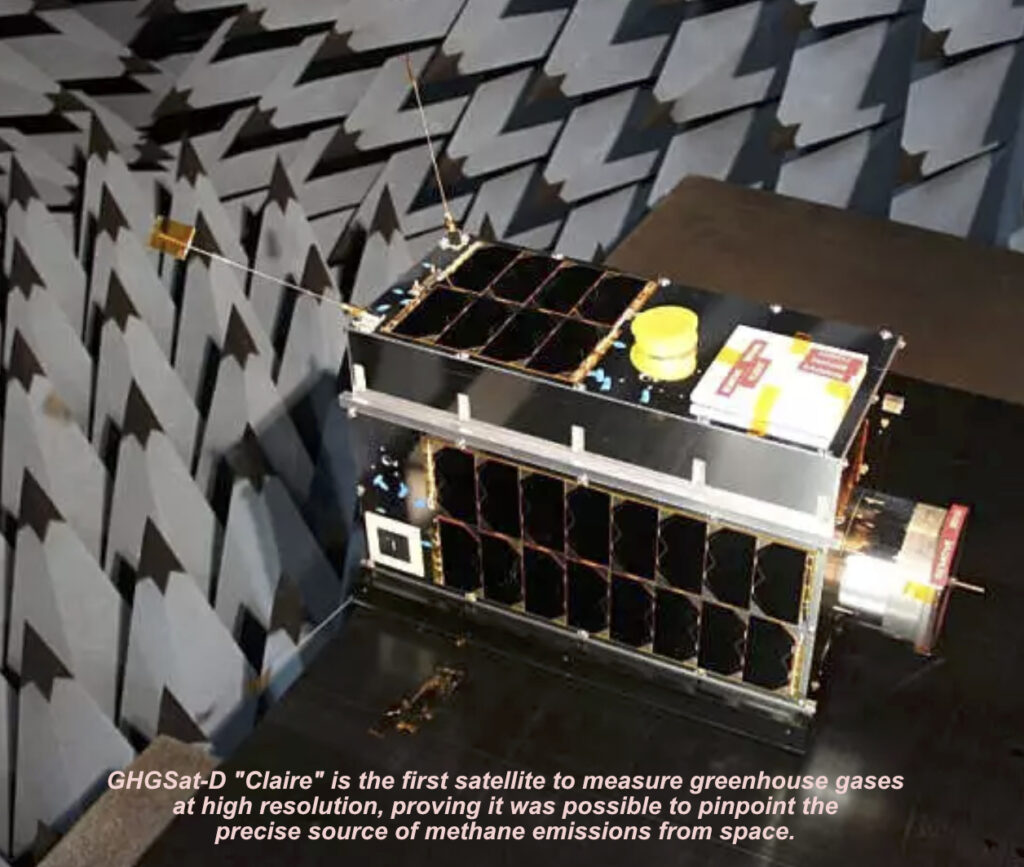
The first orbital sensor able to pinpoint carbon dioxide emissions from individual industrial facilities, such as cement or power plants, has been successfully launched from Vandenberg Space Force Base in California. GHGSat C10, known as Vanguard, is the precursor to a new generation of space instruments that will build on GHGSat’s extensive experience with methane emissions to provide frequent, accurate and independent high-resolution CO2 data from individual sites. This will transform the way carbon dioxide emissions are monitored, reported and traded.

GHGSat pioneered industrial greenhouse gas emissions monitoring from space in 2016, with the launch of Claire, a demonstrator satellite. Its patented high-resolution technology, able to image down to 25m on the ground, revolutionized the understanding of man-made methane emissions.

GHGSat is currently making more than two million facility measurements per year, on and offshore, with a constellation of nine satellites. The company also provides data to NASA, ESA and the United Nations.

The company is now using the same space-proven technology to change the way we monitor carbon dioxide.
Thanks to its high spatial resolution, Vanguard can hone in on individual targets and accurately attribute emissions. Public CO2 satellites already in orbit are not designed to do this. For the first time, operators of steel mills, power plants and petrochemical complexes will have access to independent, accurate and globally standardized emissions monitoring and data. Although many will have Continuous Emissions Monitoring Systems (CEMS) in place, independent verification can help them optimize day-to-day operations to reduce emissions.
At the national and international level, high resolution CO2 data will add to the accuracy of emissions inventories, the Global Stocktake and scientific modelling of emissions. It will also help build confidence in the c.$1 trillion global carbon trading market.
Also travelling alongside Vanguard were two new methane sensors: GHGSat C-9 (‘Juba’) and C-11 (‘Elliot’). All three satellites launched on board SpaceX’s Falcon 9 during the Transporter-9 mission via Exolaunch. The GHGSat sensor payloads were built by ABB in Canada and integrated into satellites designed, built and operated by Spire Global. All three satellites successfully separated from the launch vehicle approximately 55 minutes after liftoff.
“Our high-resolution satellites helped put methane – a greenhouse gas that was out of sight and out of mind – at the top of the climate agenda. Now our goal is to harness this experience and change the conversation around CO2. With regulators, investors and the public increasingly holding companies to account, for both their direct and indirect emissions, there is little doubt that better CO2 data is needed. Trusted, independent data will help incentivize industry to manage its emissions effectively. It will ensure that climate policies are well-founded. Above all, it will help all of us stay on track to achieve Net Zero by 2050.” — Stephane Germain, CEO at GHGSat
